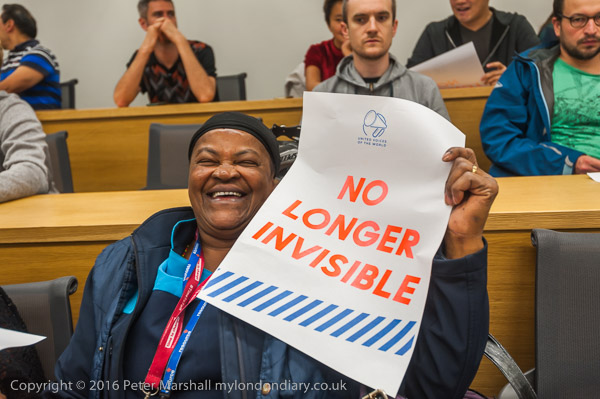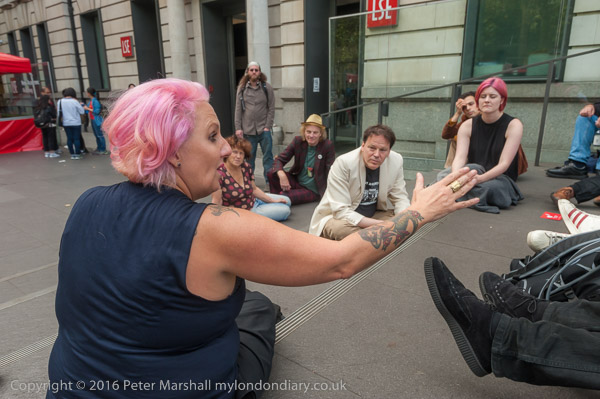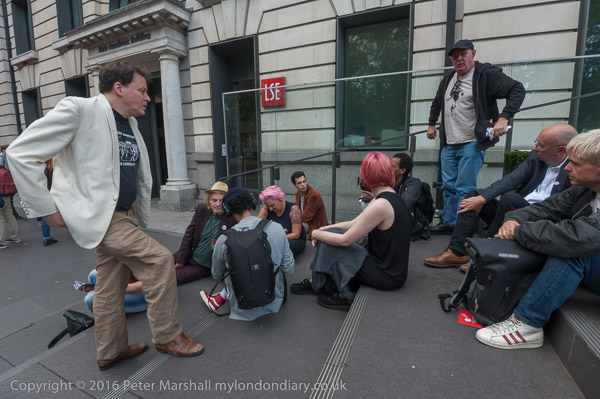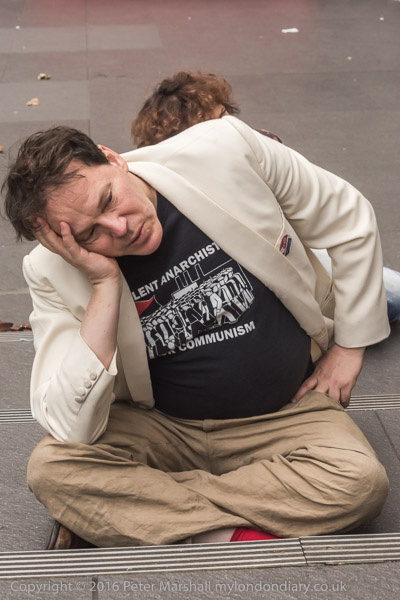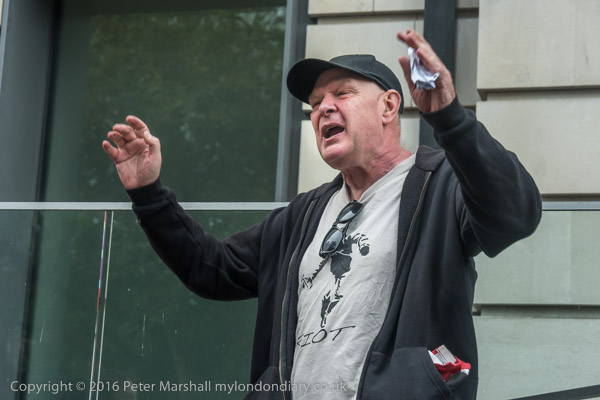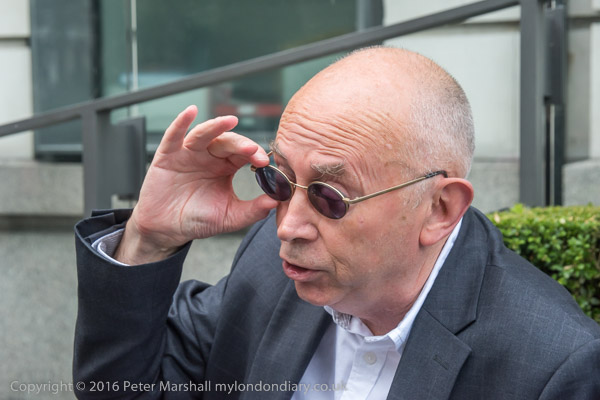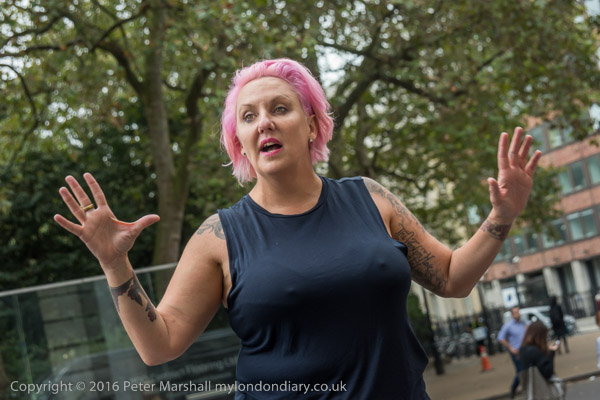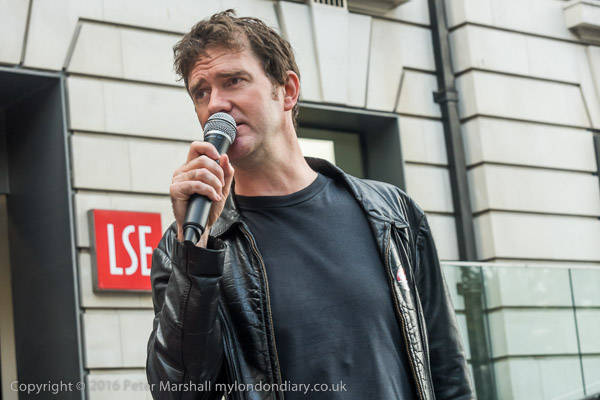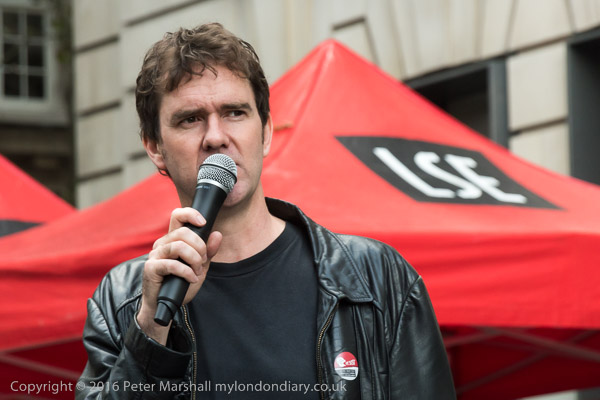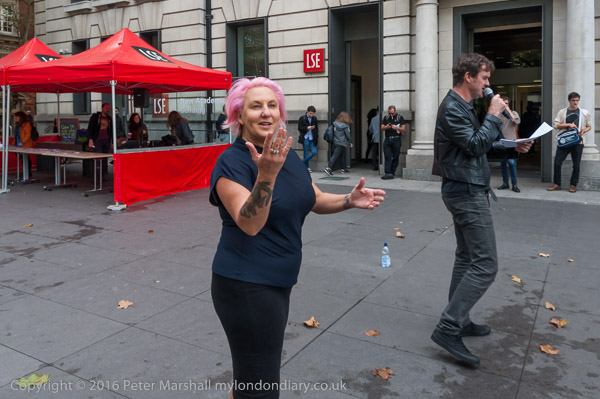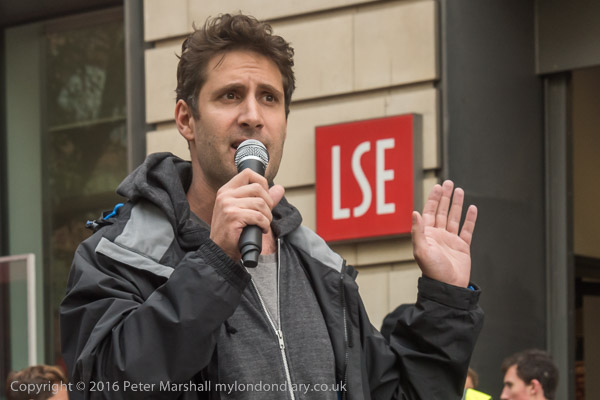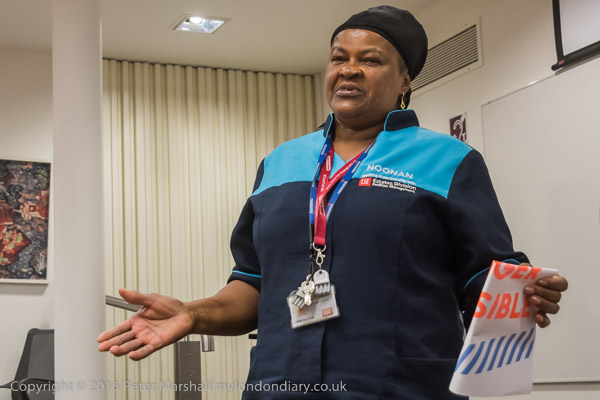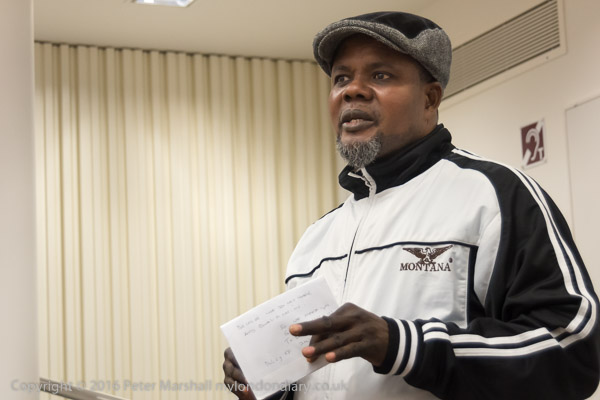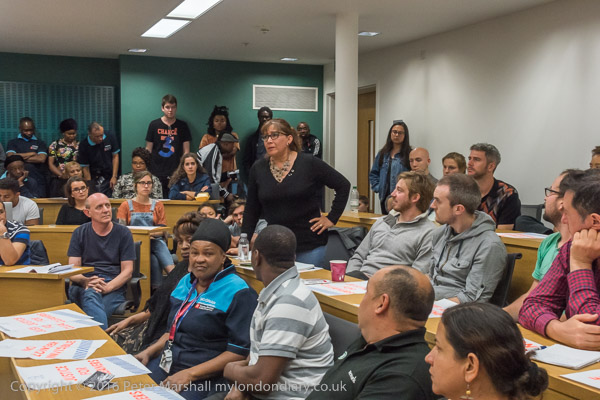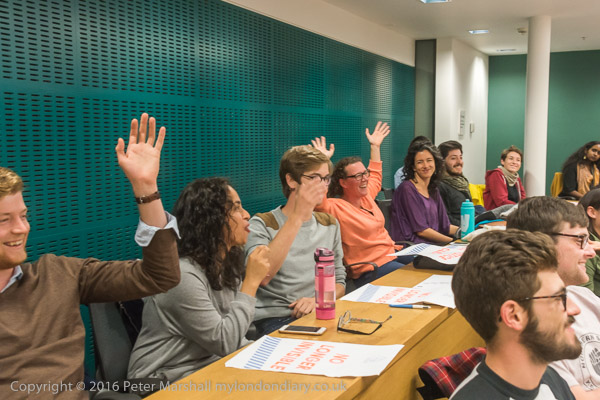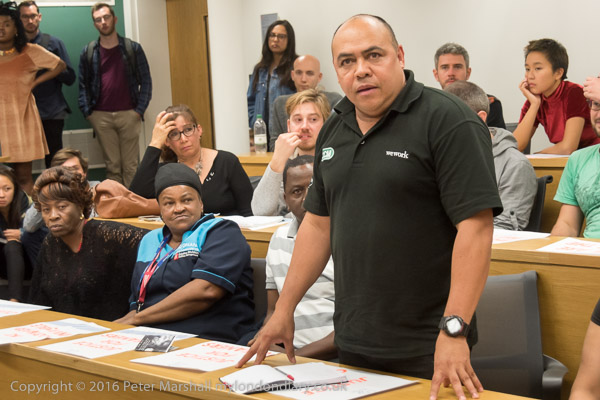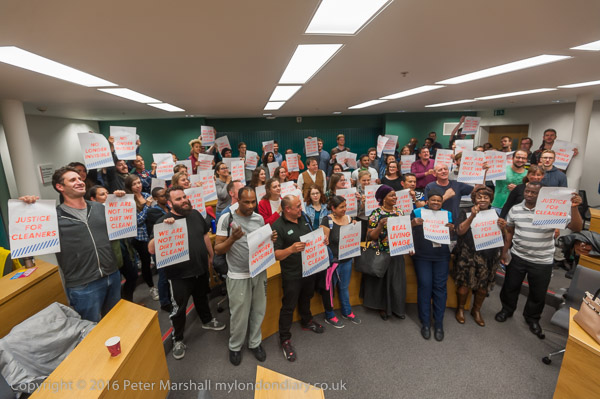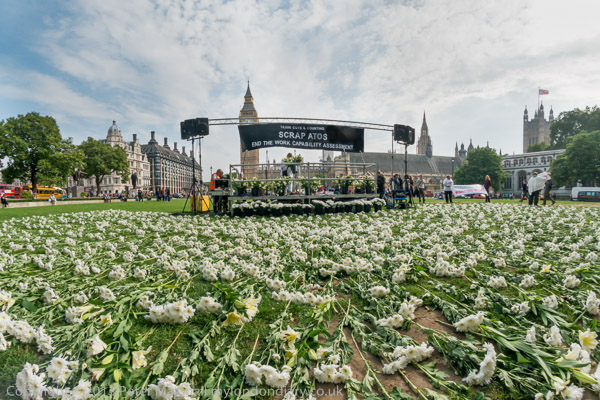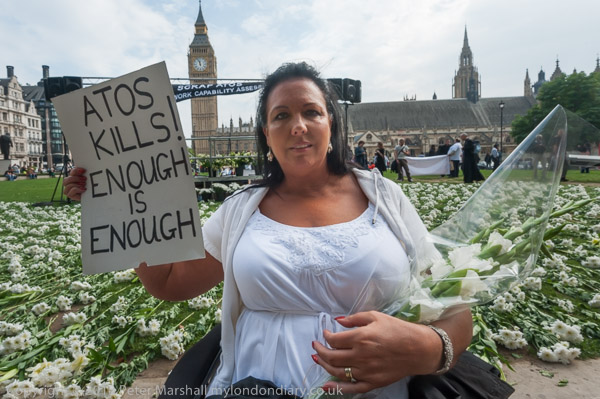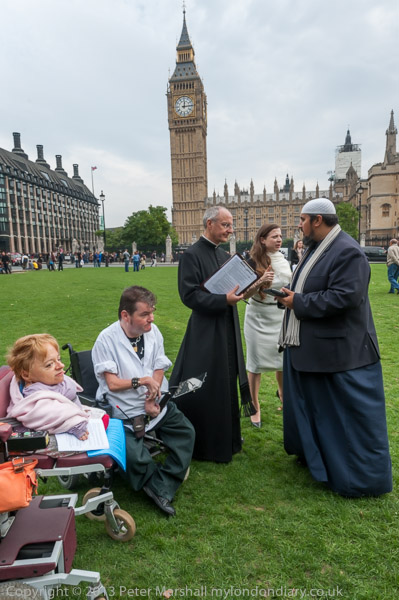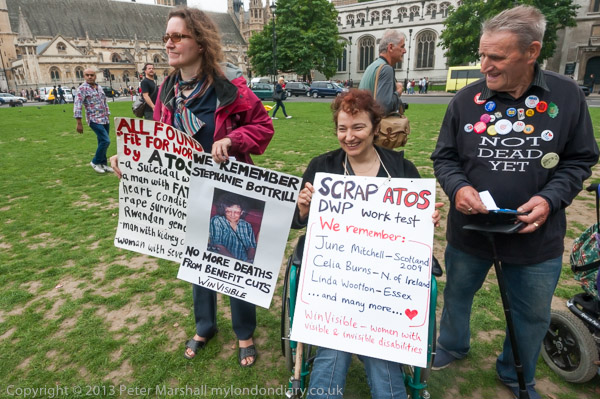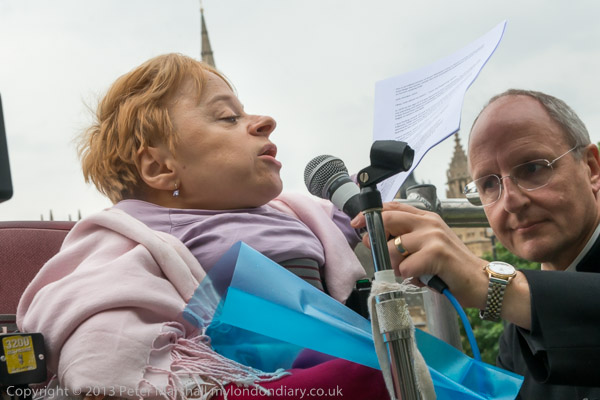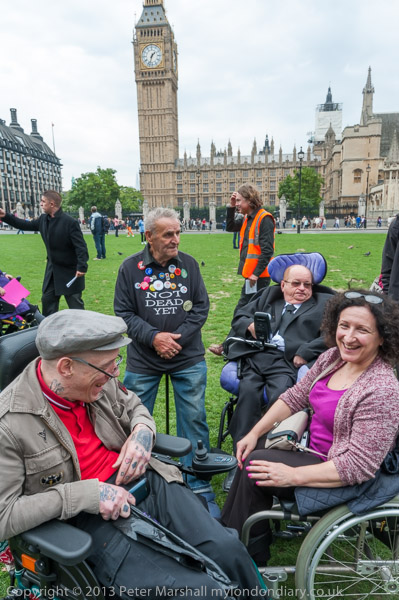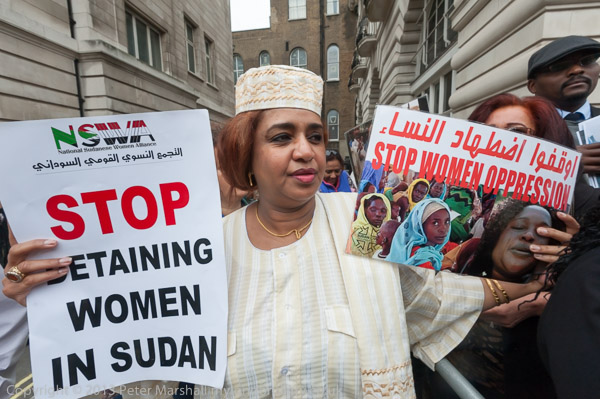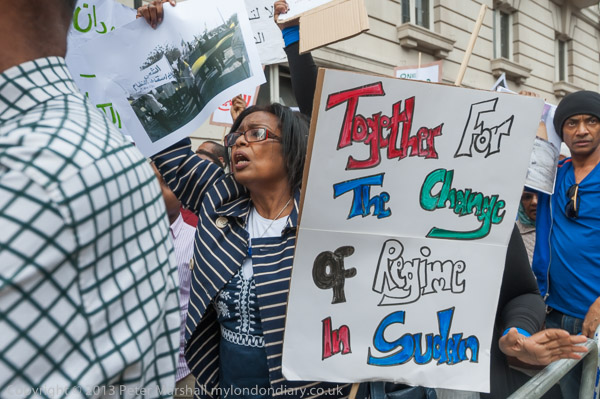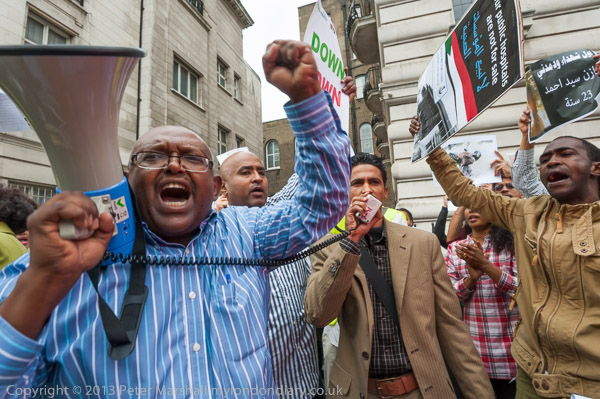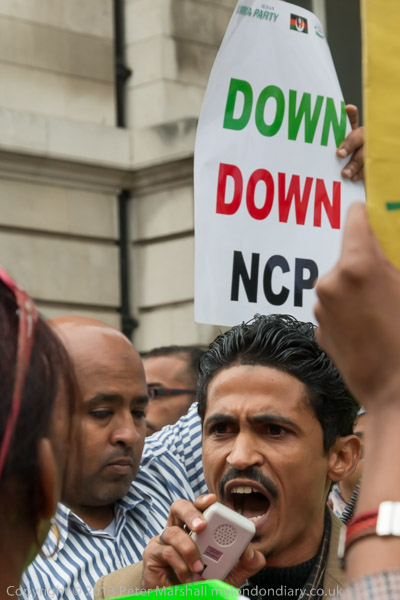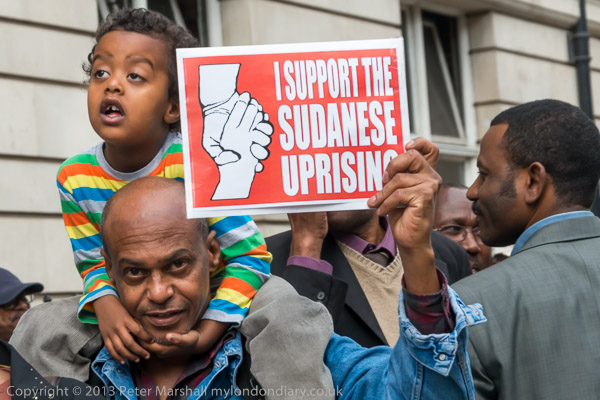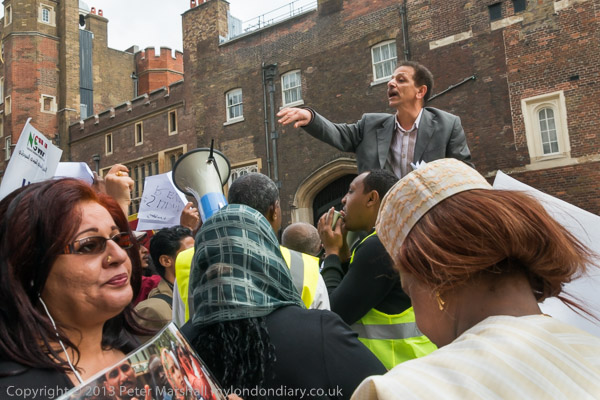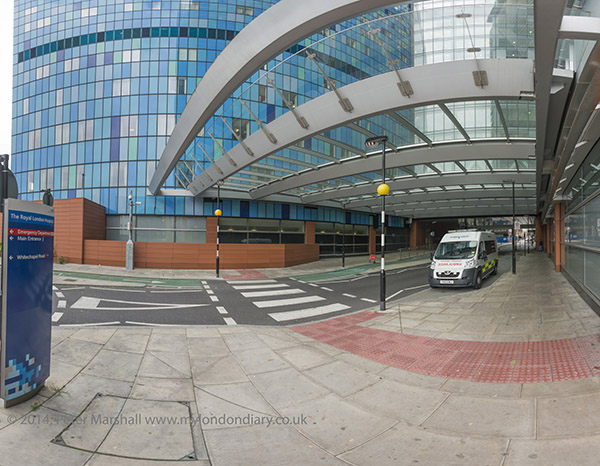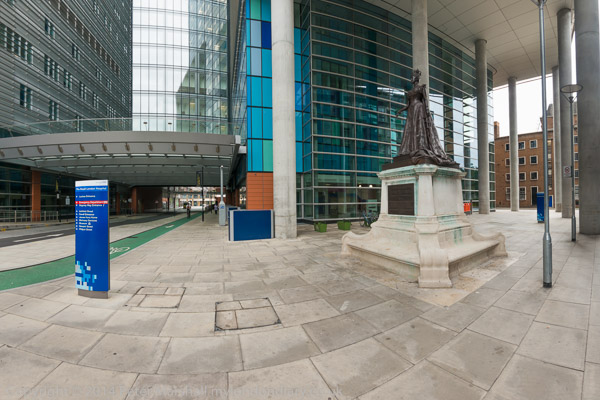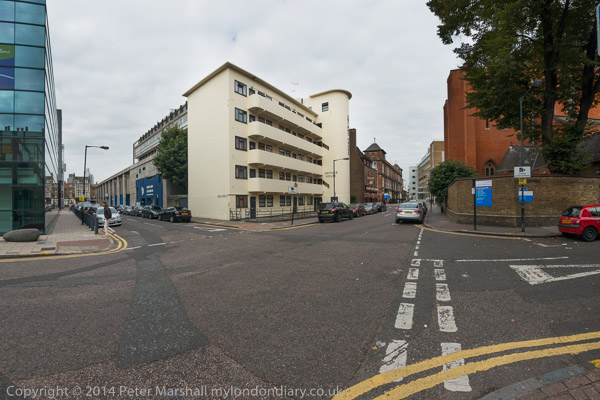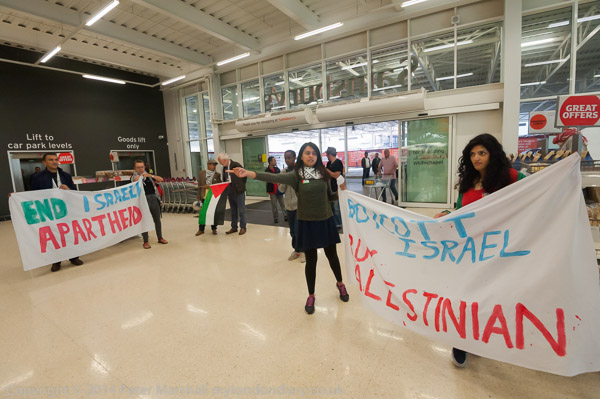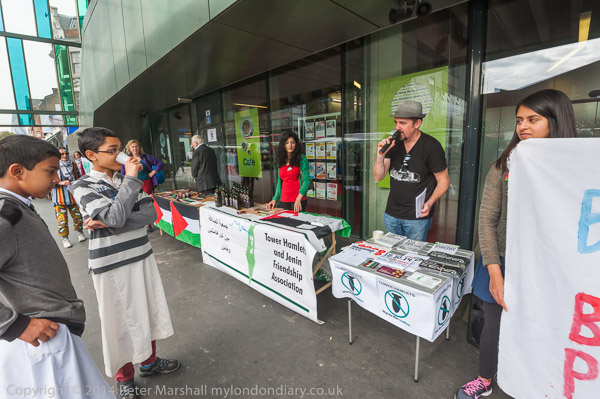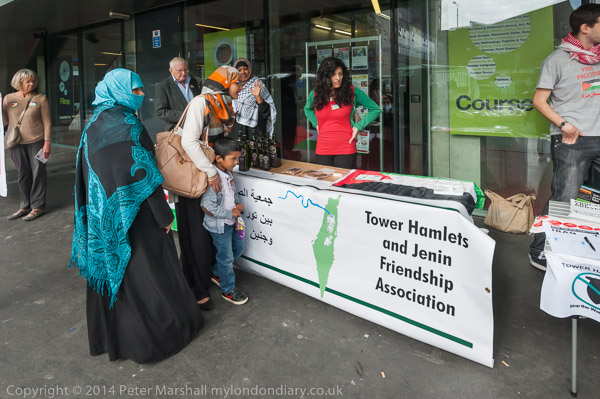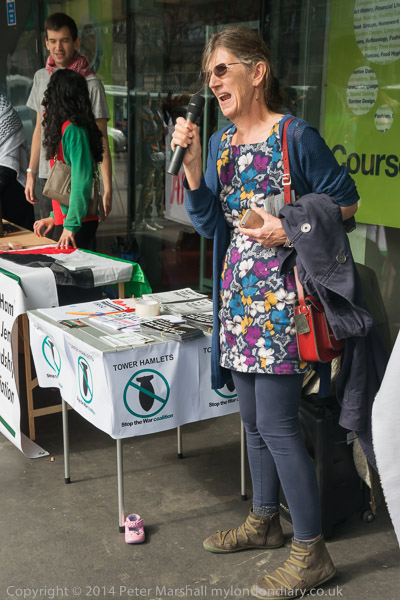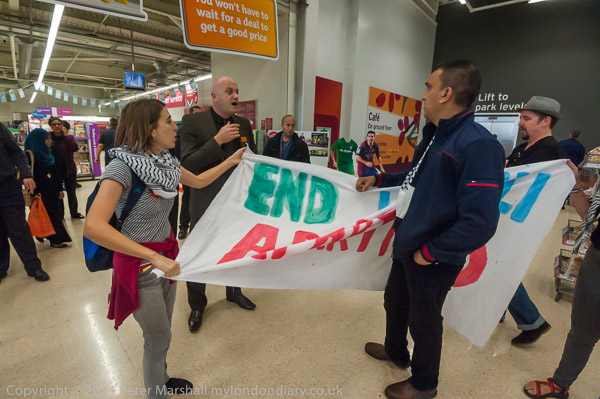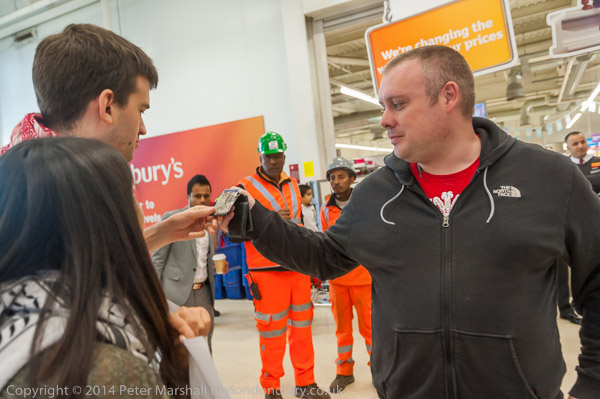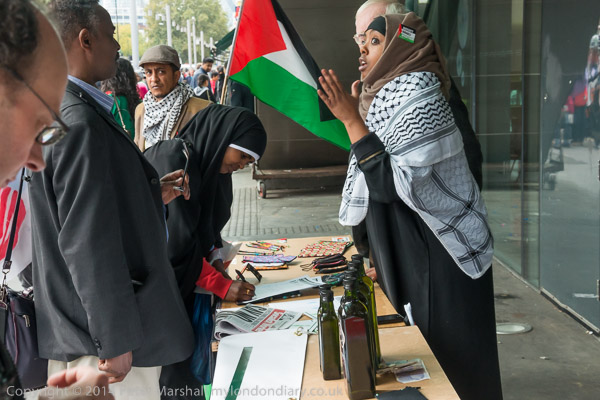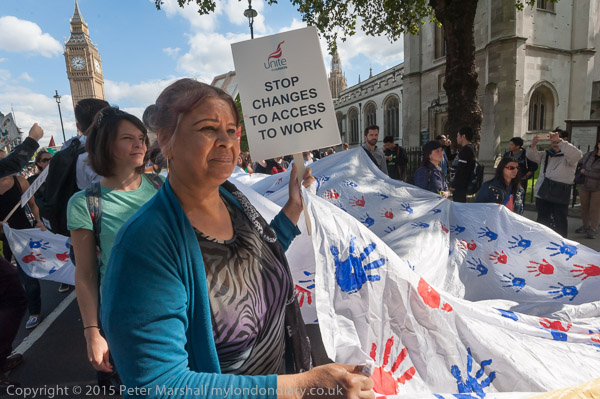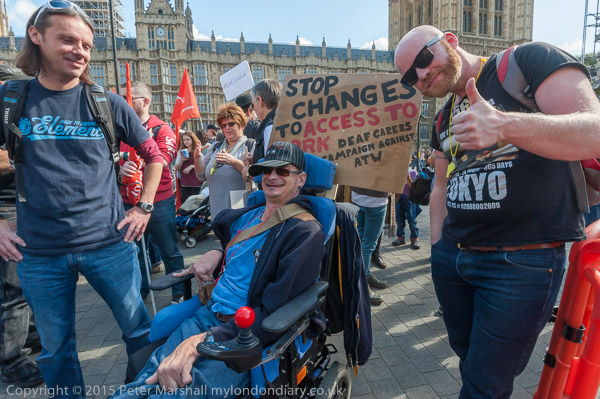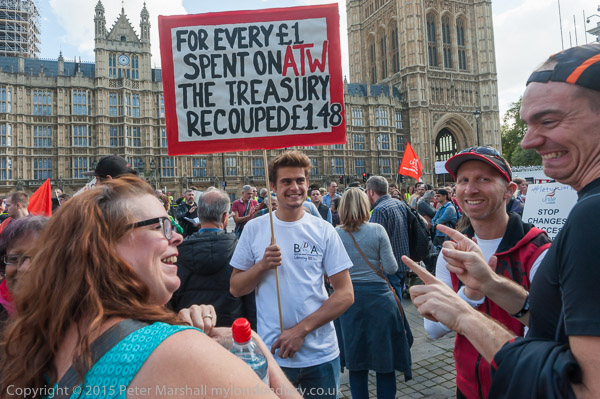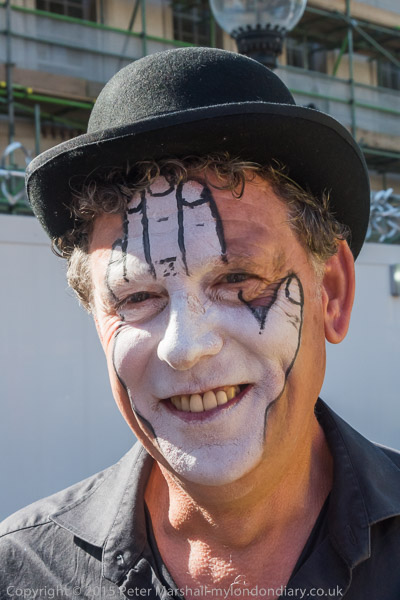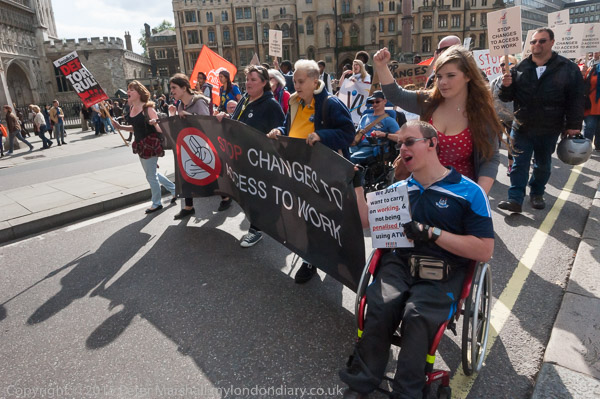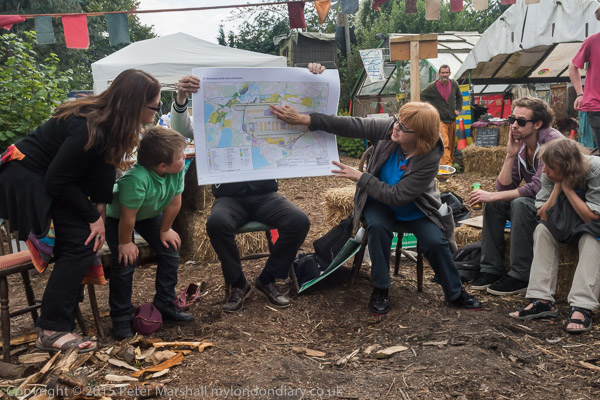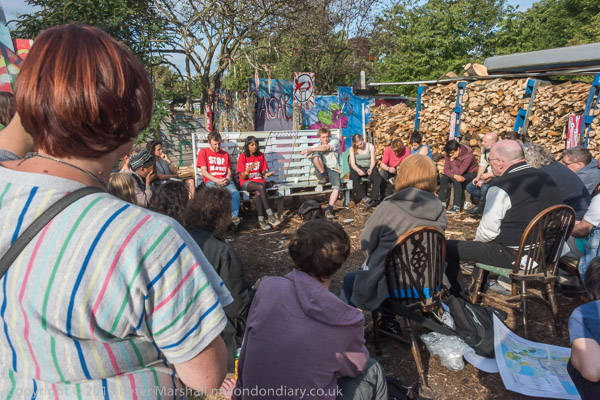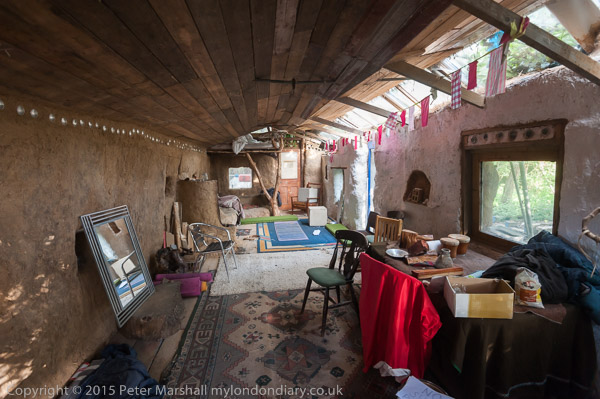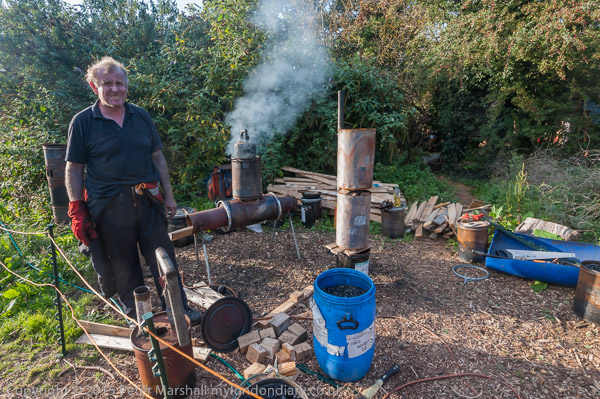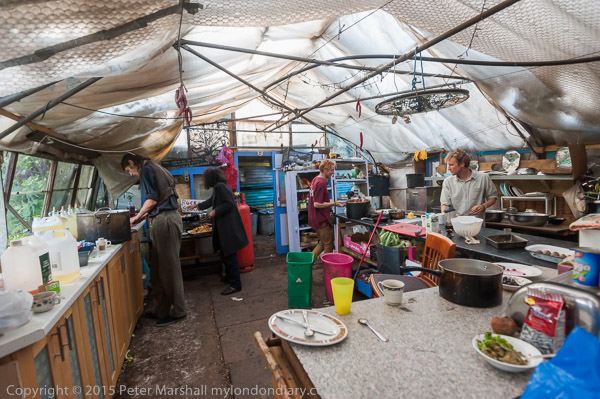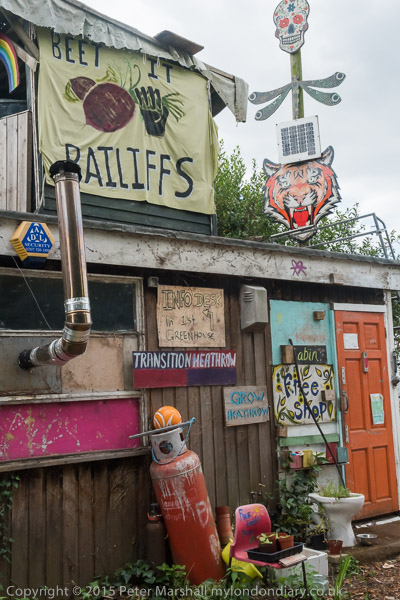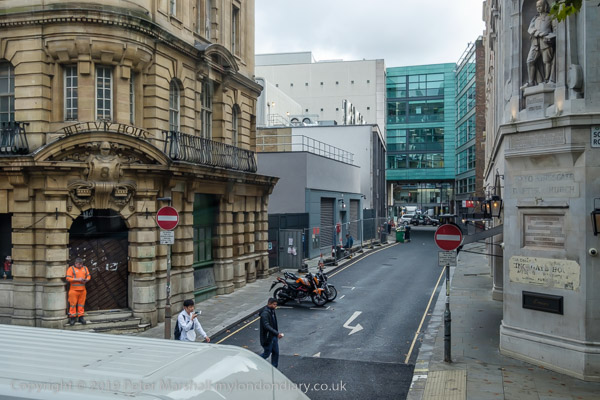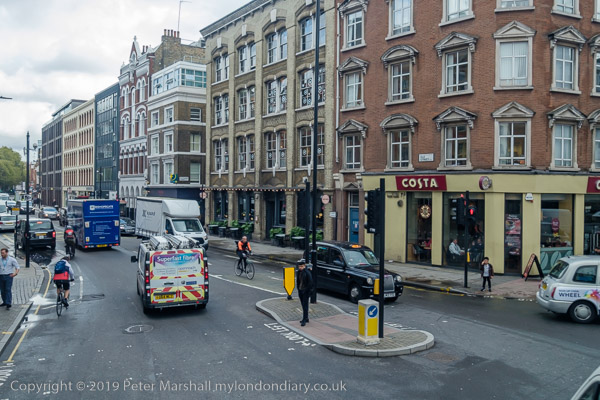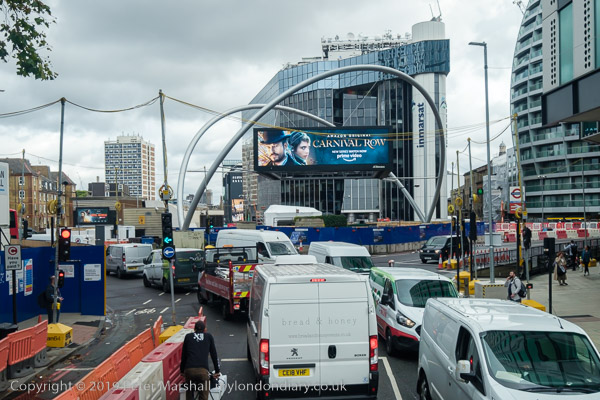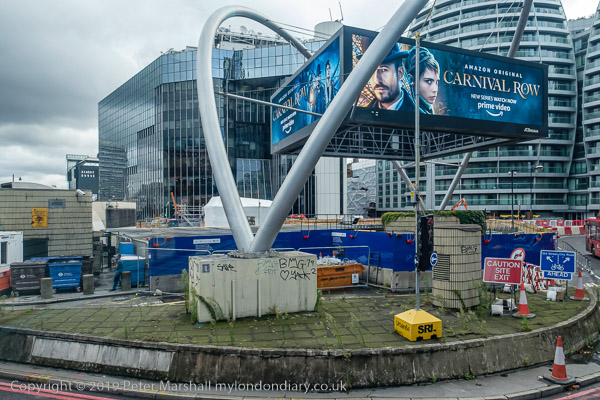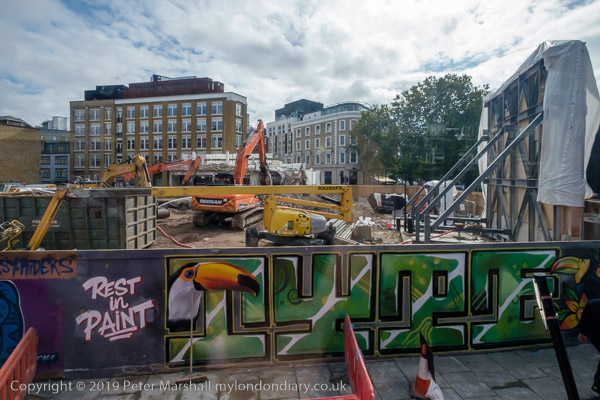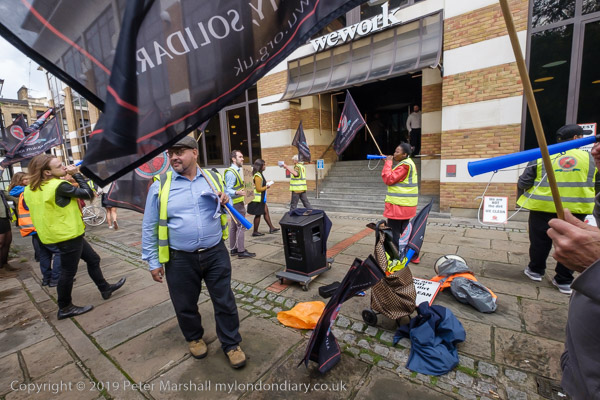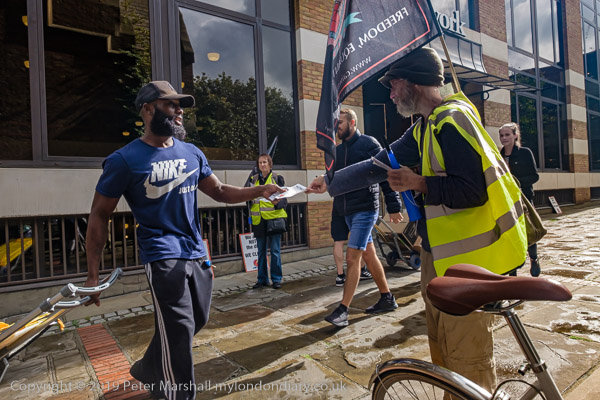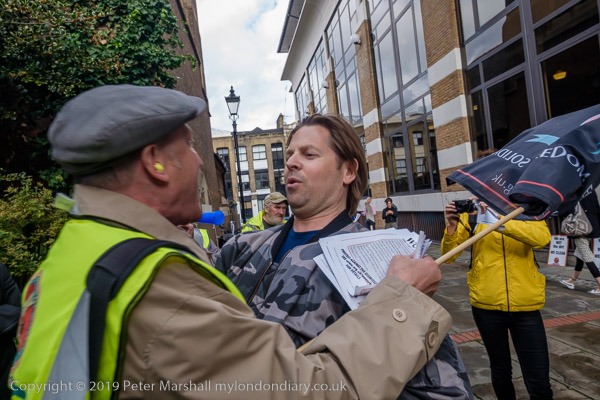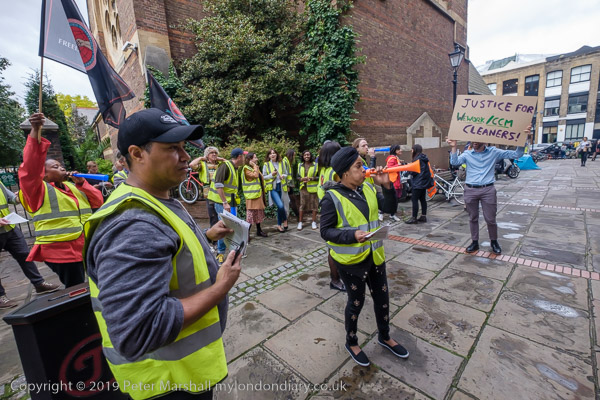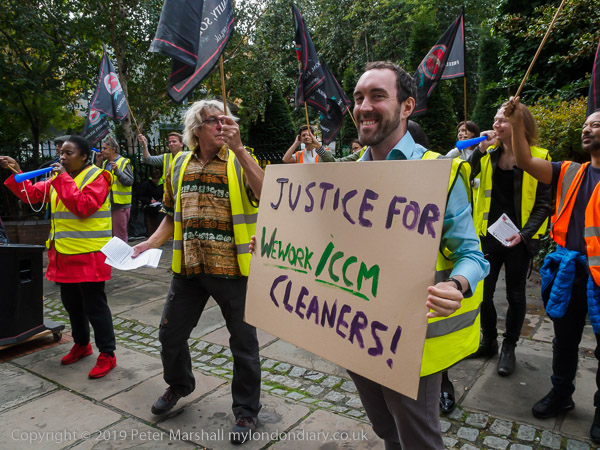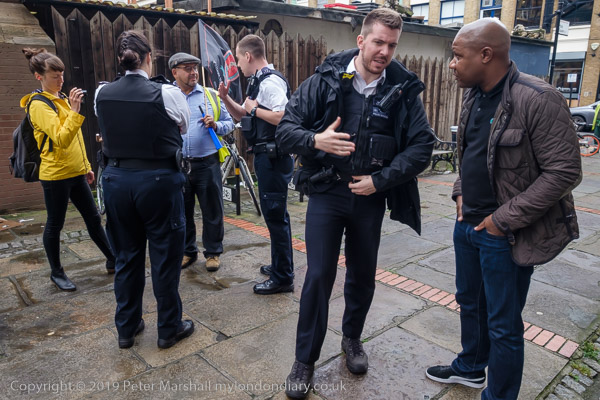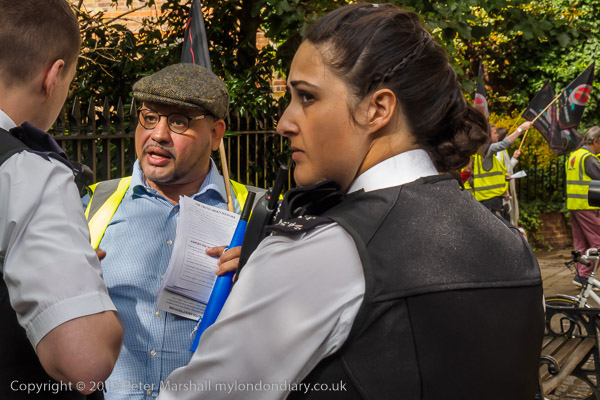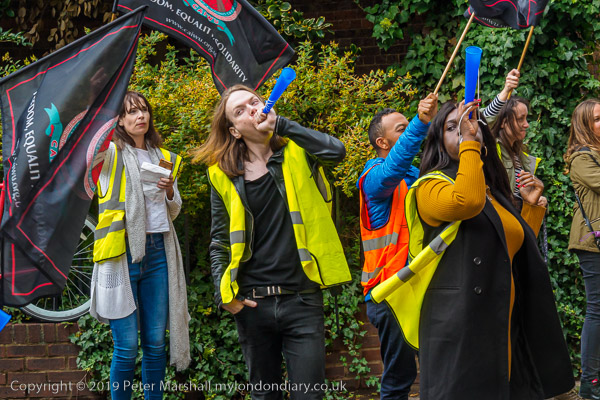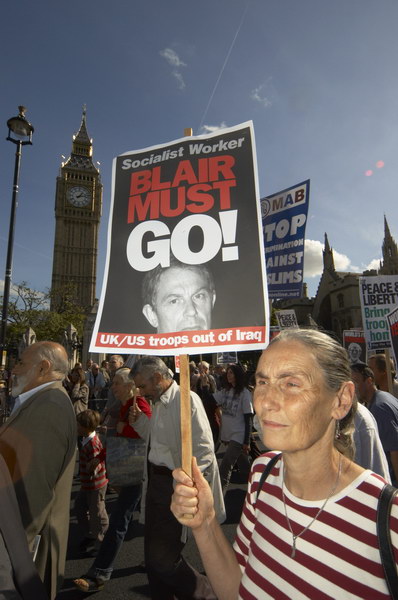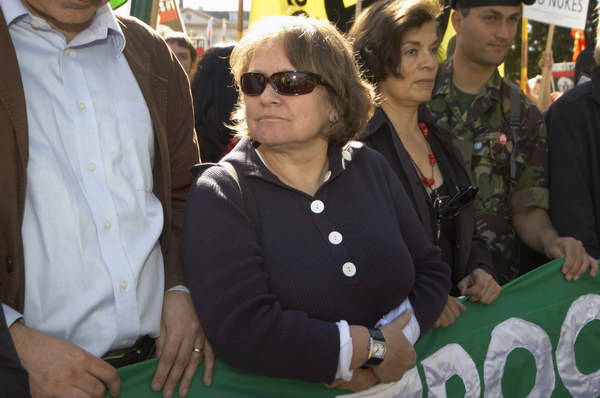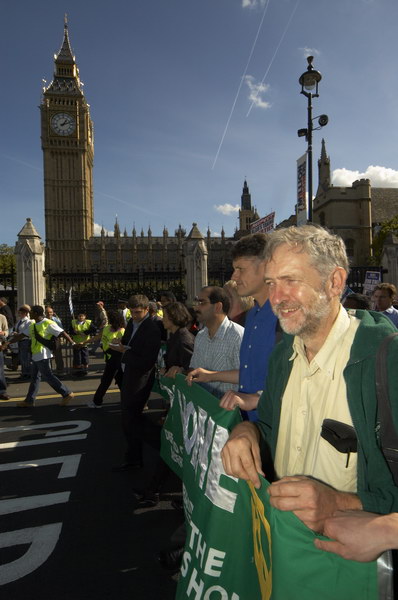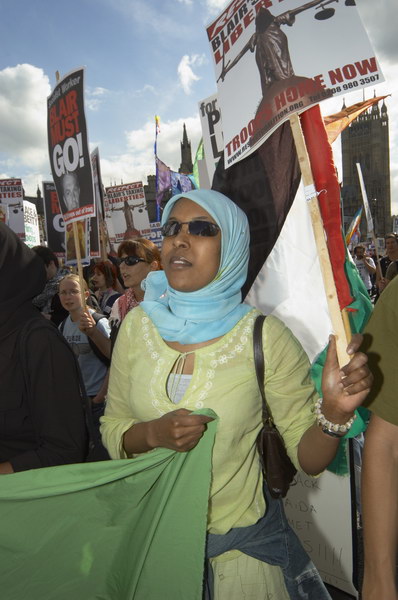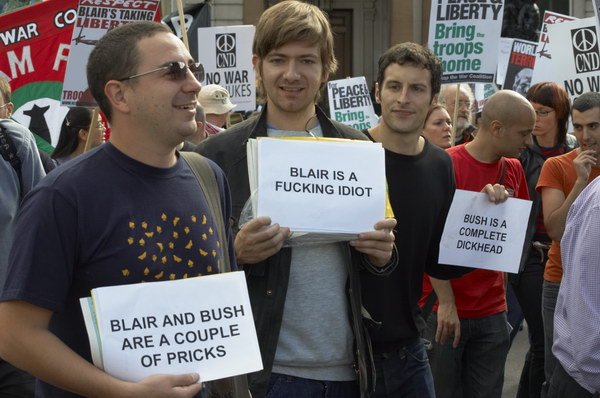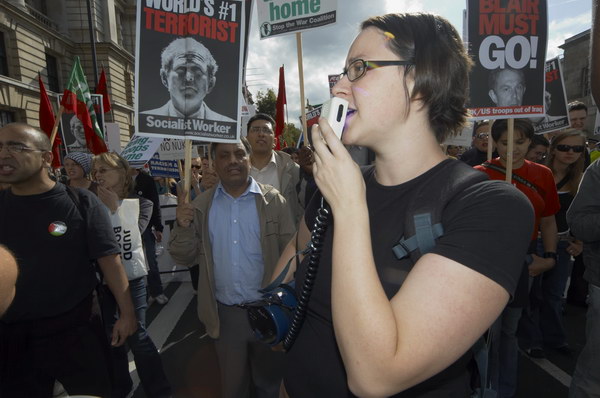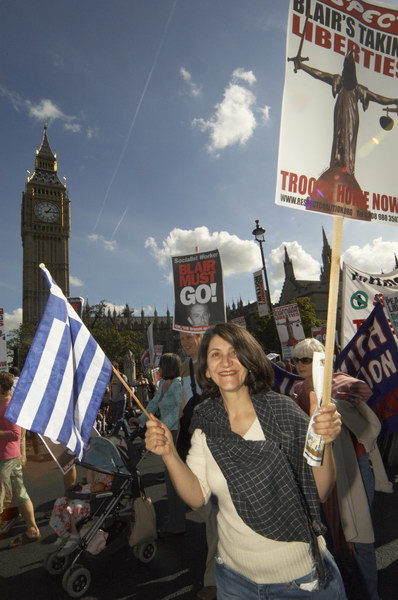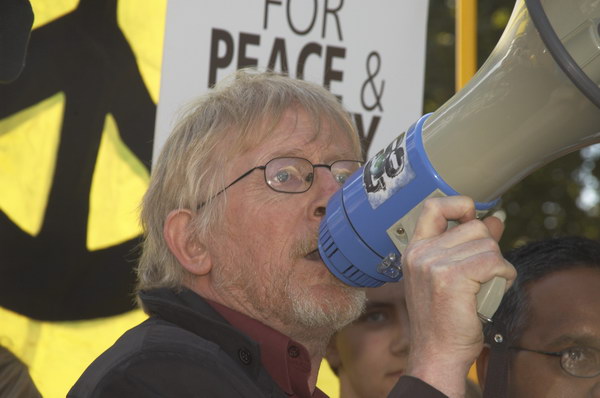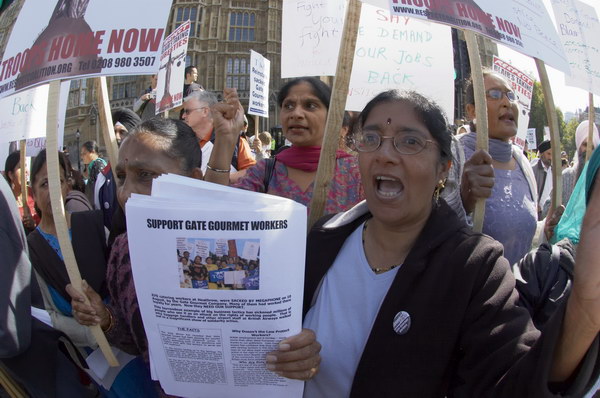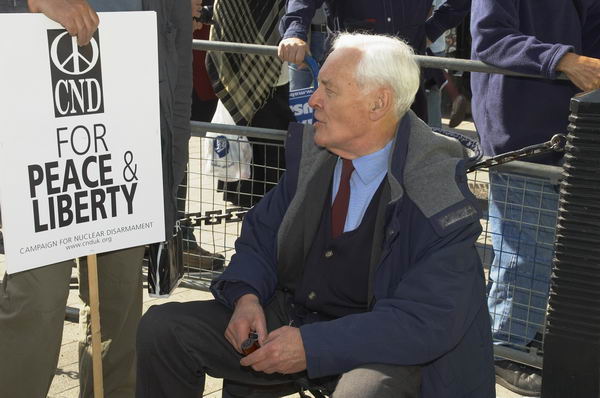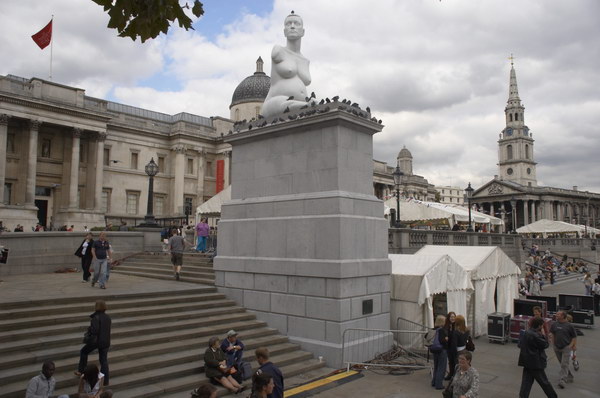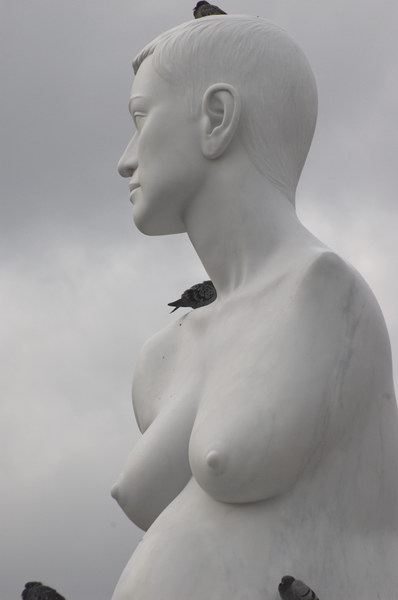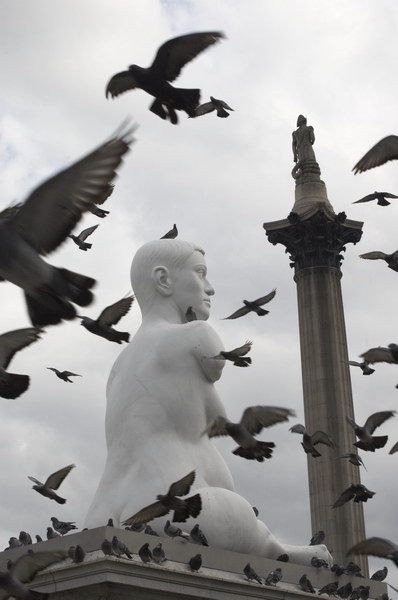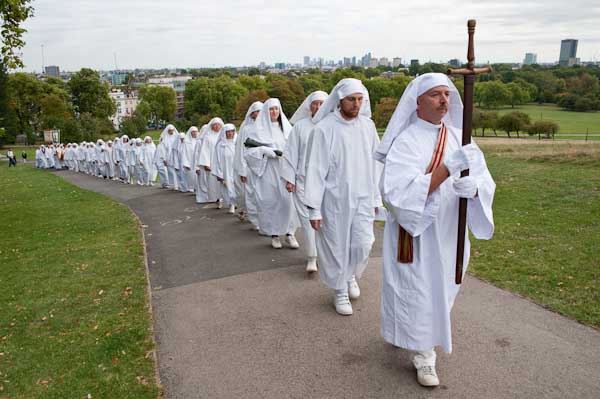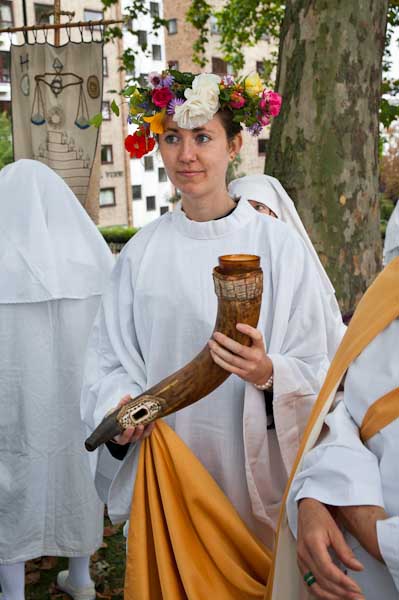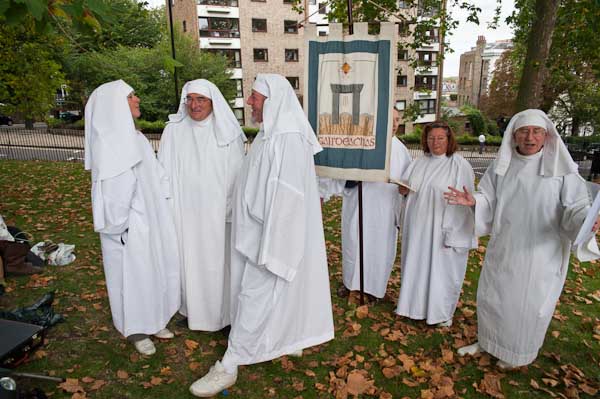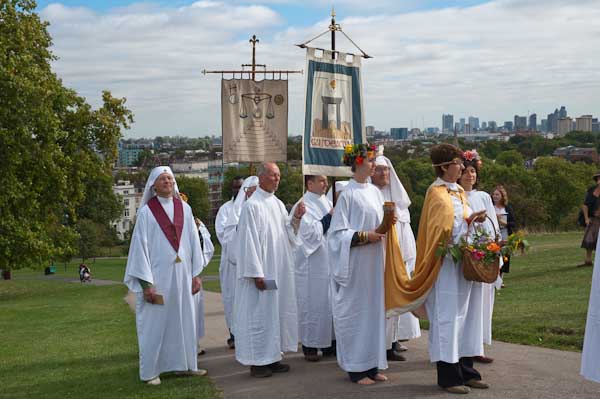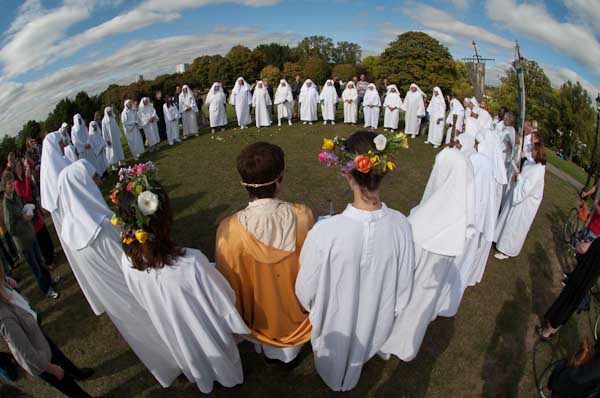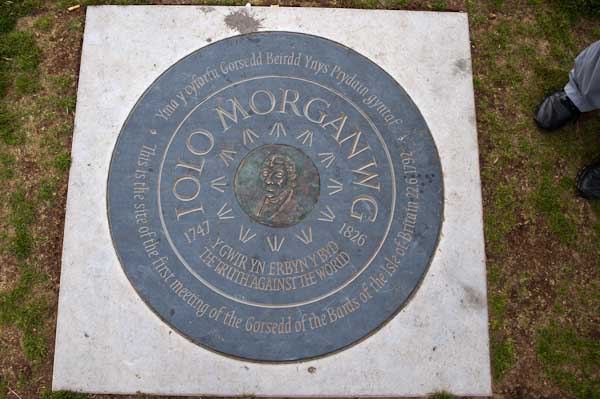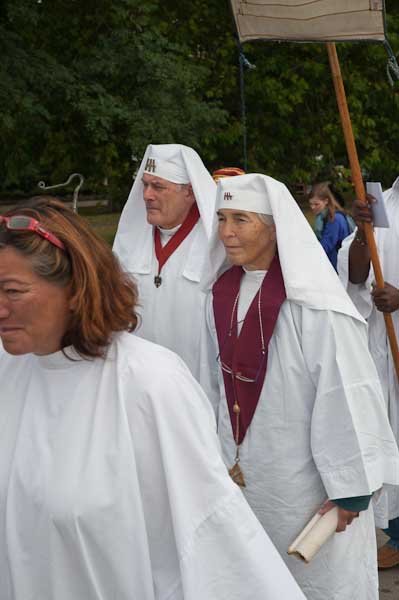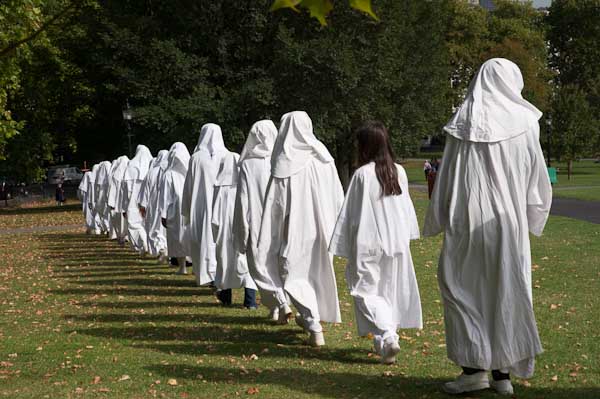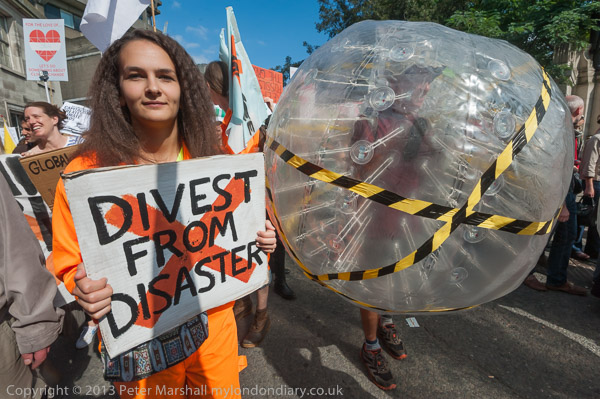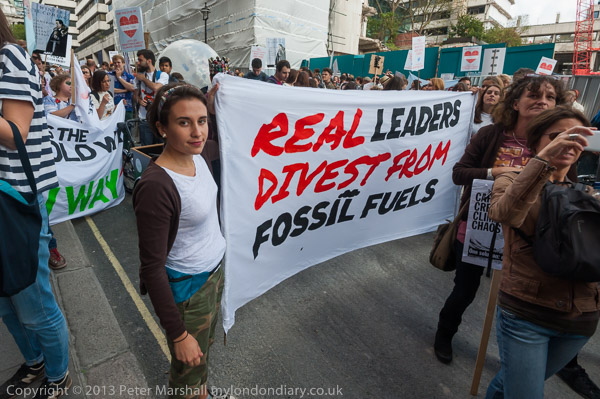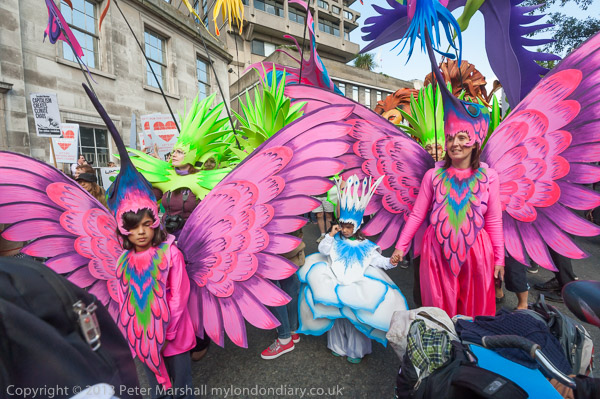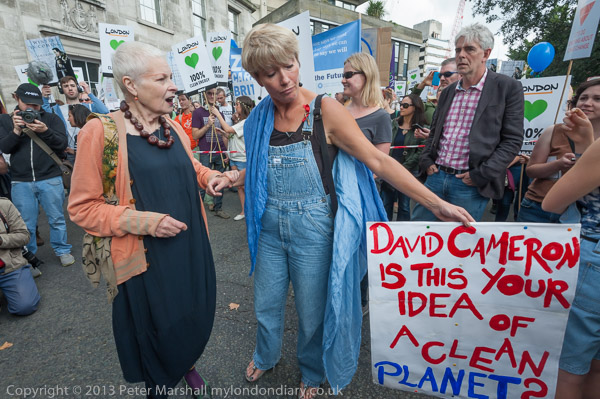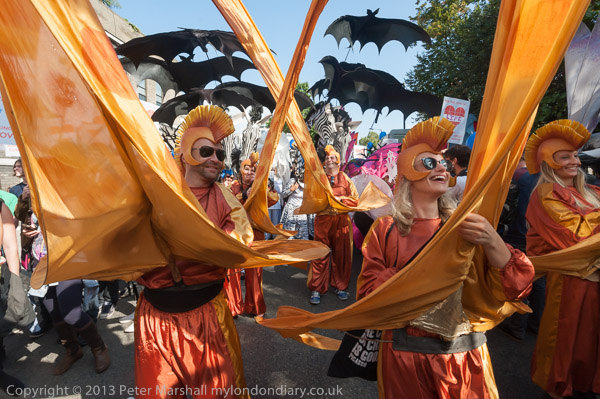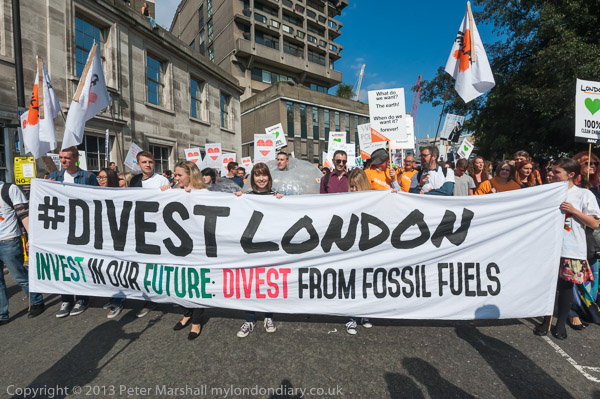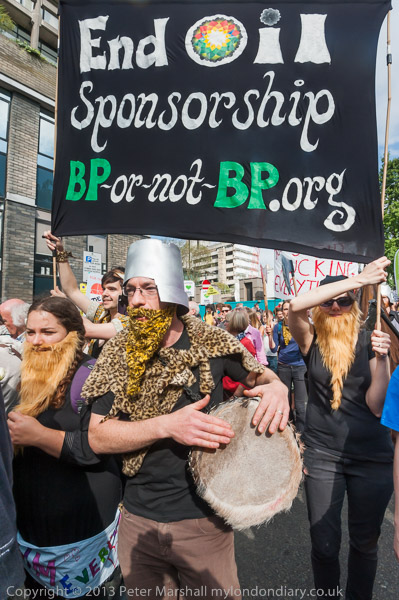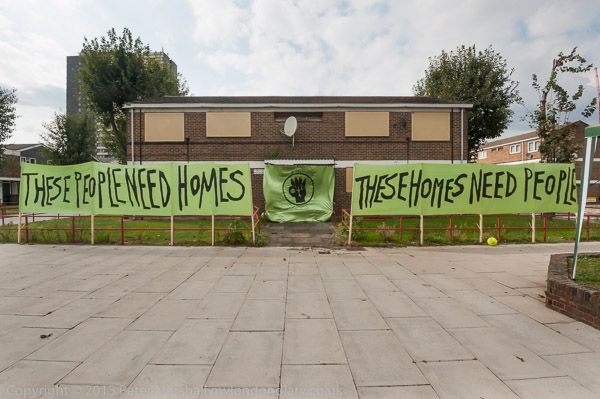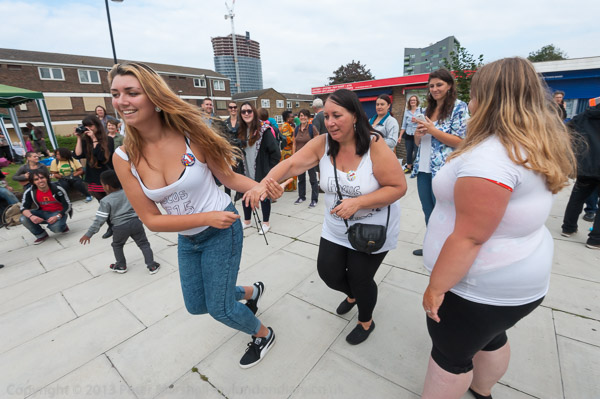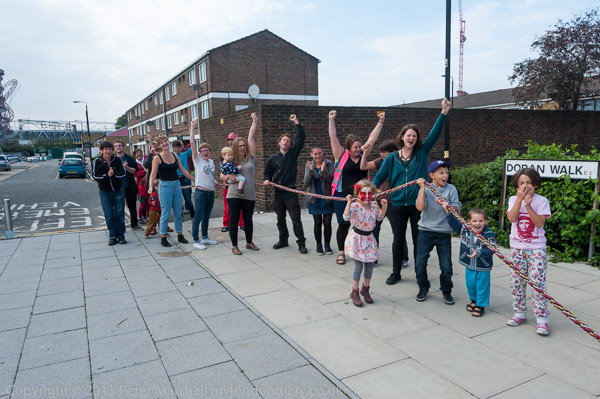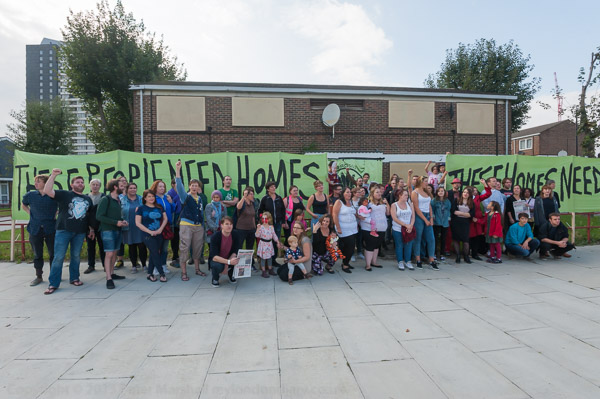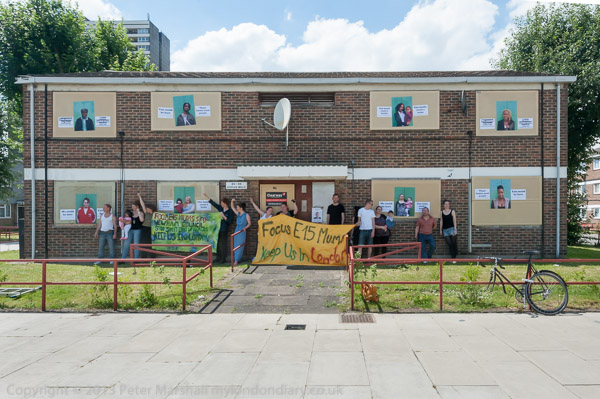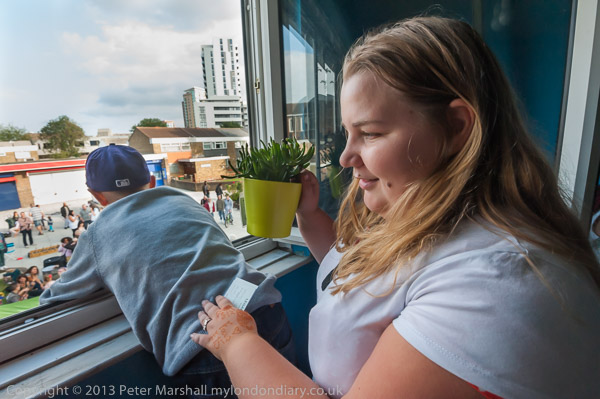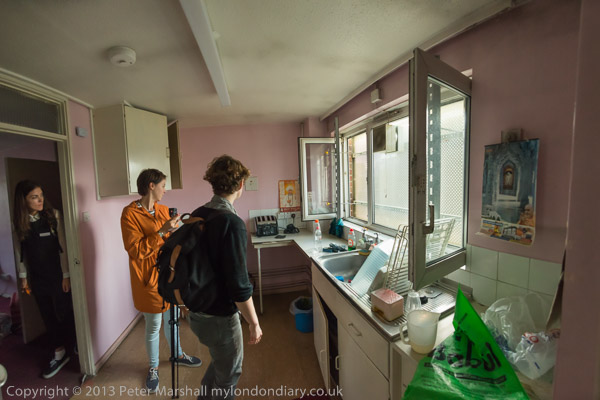Martydom of Ali & Cut the Carbon: Two unconnected events in London on Sunday 30th September 2007. I photographed a Muslim festival in Park Lane before making my way to Battersea where a long march organised by Christian Aid around Britain was resting before its final push to the City of London calling for urgent action to cut our carbon emissions. Sixteen years ago it was already clear we needed to do this to avoid climate catastrophe – but our government has clearly not yet got the message with its recent decisions, including giving the go ahead to exploit the Rosebank field.
Mourning the Martrydom of Ali – Marble Arch
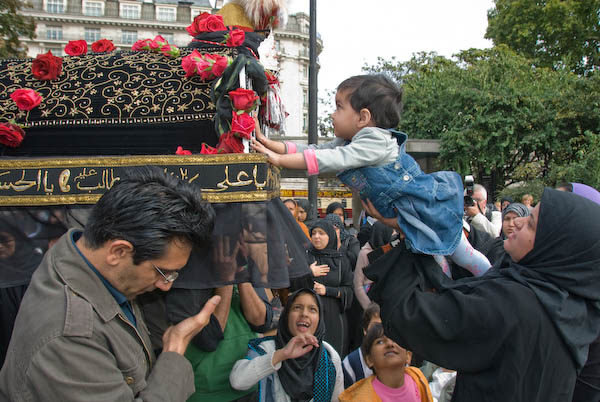
Ali Ibn Abi Talib grew up in the household of the prophet Muhammad and was the first male to profess his belief in his guardian’s divine revelation.
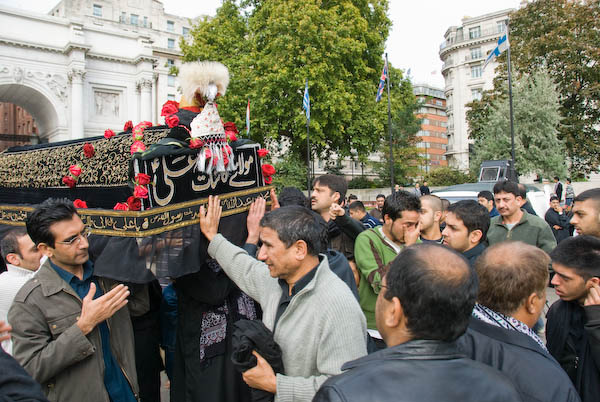
Later he married Muhammad’s daughter Fatimah and became a great warrior and leader and also one of the foremost Islamic scholars. He was made Caliph after the previous Calip was assassinated, and was then himself assassinated while praying in the mosque at Kufa, Iraq dying a few days later on the 21st of Ramadan in 661CE.
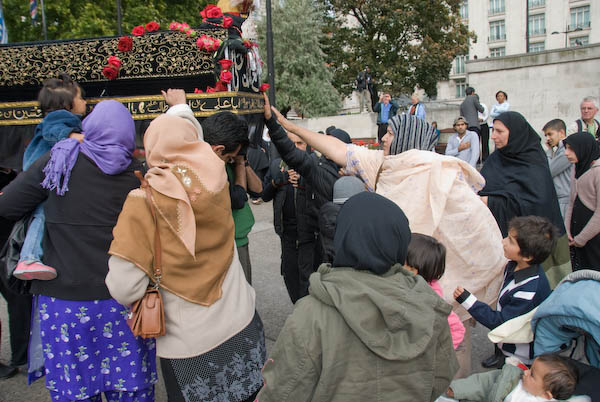
Revered by all Muslims, he is particularly celebrated by Shia, who regard him as second only in importance to Muhammad, and celebrate his martydom annually, including in a colourful march on the streets of London.
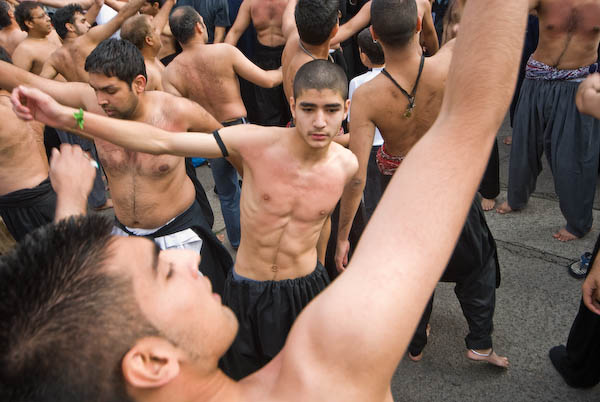
They gathered in front of Marble Arch for a lengthy period of mourning before a ceremonial coffin was carried out and men and women rushed to touch it. People began to beat their breasts, the men with extreme force and the women very much more decorously.
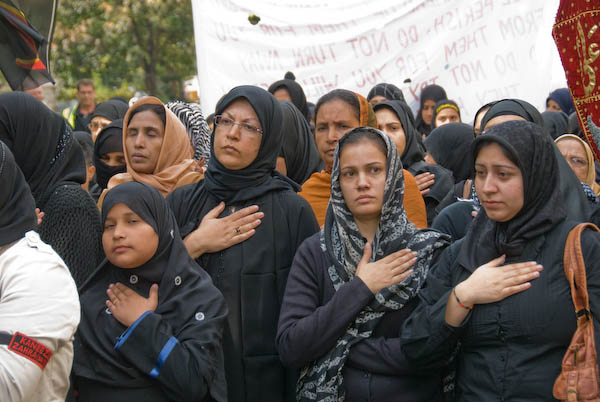
Eventually they formed into a procession and moved off down Park Lane, with much continued mourning and beating of breasts, led by a tall banner about Ali, then the men, followed by the ceremonial bier and finally the by the women with more banners.
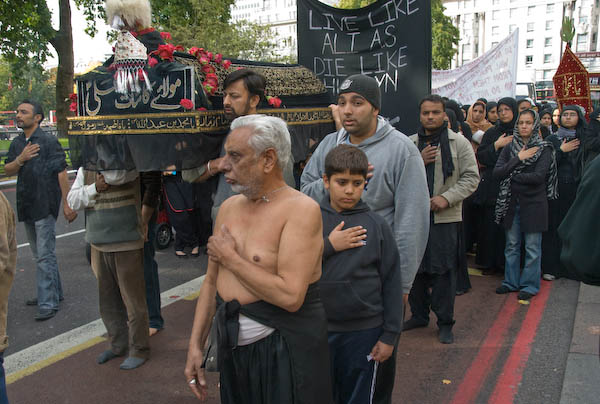
Although the men were happy to be photographed, some were concerned that I also photographed the women taking part in this and other similar events. But after putting the photographs from events like this on-line I received e-mails from some of the women in them thanking me for having recorded their participation.
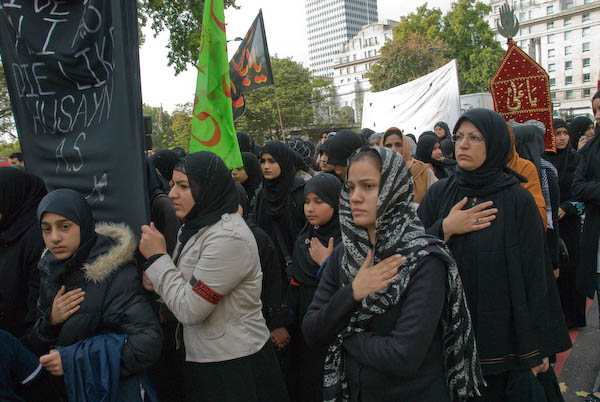
I left the marchers as they moved down Park Lane. The procession continues for some hours, moving slowly and then returning to Marble Arch but I had to go to Battersea.
Many more pictures beginning at on My London Diary.
Cut The Carbon March: Christian Aid – St Mary’s Battersea
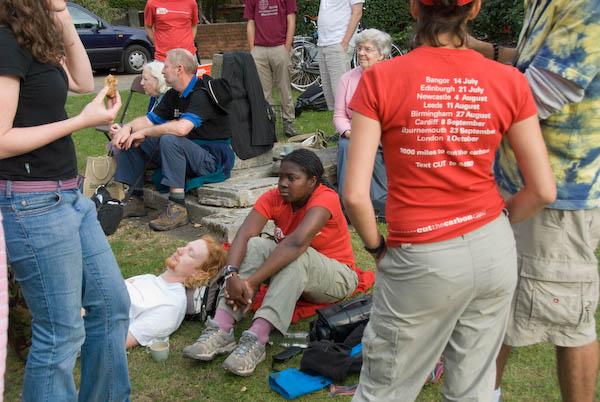
The ‘Cut The Carbon March’ organised by Christian Aid called for the UK and the world to take urgent action to reduce the carbon emissions which are leading to a catastrophic global warming which was already threatening the lives and livelihoods of many around the world, particularly in the Global South.

Clearly all countries needed to take urgent action to avoid the growing catastrophe, and countries such as the UK with higher per capita carbon footprints need to take a lead in this as well as helping other less industrialised countries to do so. We have benefited from a couple of hundred years of carbon-dirty industrial growth which has brought to world to the brink.
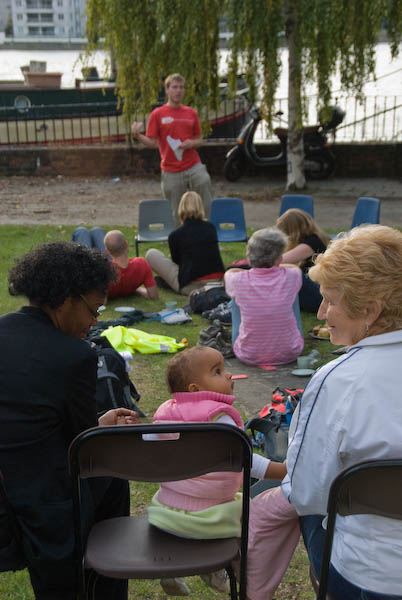
The marchers, including a number of international participants, had begun in Northern Ireland in July, moving on to Scotland, England and Wales on a thousand mile route through major cities which were listed on the back of the t-shirts worn by the marchers. The march was intended to convince people of the necessity to cut carbon emissions from the UK and globally. As well as marching there were events at their stops on the route, including a visit to the Labour Party conference in Bournemouth where they had met with then Prime Minister Gordon Brown.
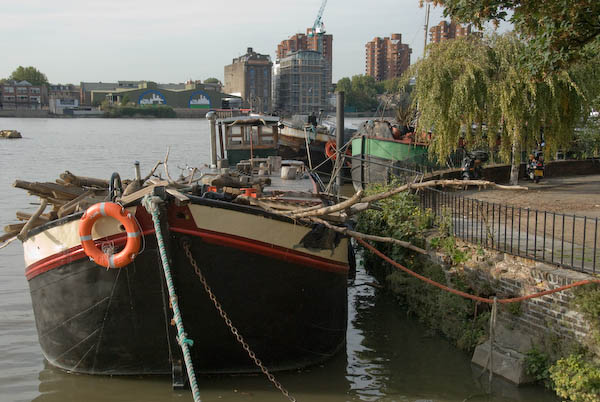
Many others had joined the core marchers, walking with them for short sections of the route and providing hospitality at churches along the way. They were stopping in Battersea and taking part in an evening service in St Mary’s there before the final day of the march which was to end at St Paul’s Cathedral on October 1st.
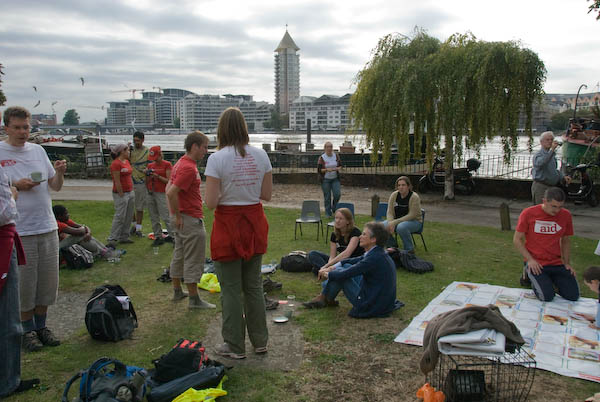
I was late and the marchers had arrived at St Mary’s just I few minutes before me and were enjoying a rest in its riverside churchyard. Later some talked about the march and why they had given up their summer to take part in it as it was so vital that the UK and the world take serious action.
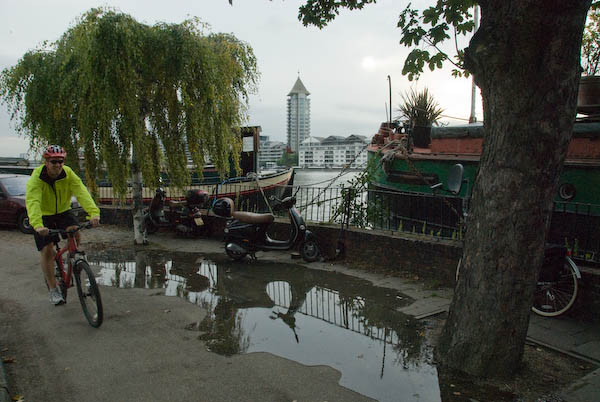
We were reminded that some of the world’s lower-lying countries were being threatened by the sea level rise from global warming, with ice-caps melting as a high Spring tide began to flood parts of the churchyard, but fortunately stopped with only a few large puddles at one side. But the sea-level will continue to rise and make some whole island countries uninhabitable as well as large areas of others already subject to flooding.
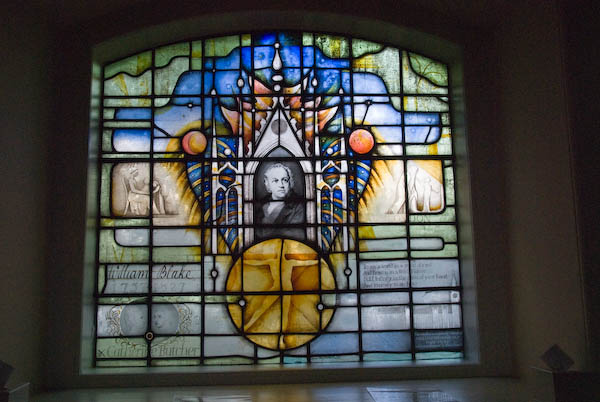
More recently we are also now seeing the effects of global heating and climate instability clearly in the UK, Europe and North America with record high temperatures, huge forest wild fires and odd weather patterns affecting crop yields. But the fossil fuel companies are still huge lobbyists and contributors to party funds and still our UK government, while paying lip-service to zero carbon in the rather distant future of 2050, continues to pump up the carbon with new coal, gas and oil exploitation. Total madness.
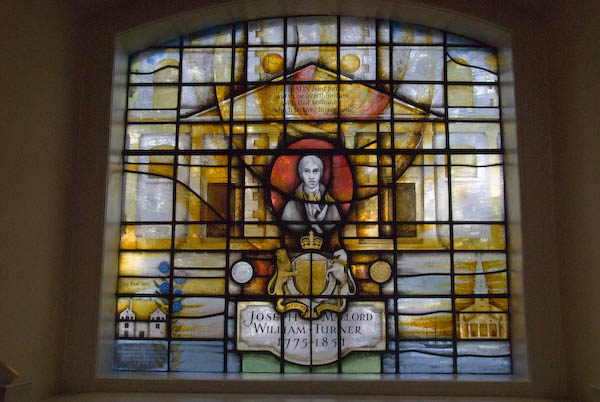
But this was a fine September evening and St Mary’s is a fine listed building and I was pleased yet again to take a tour inside and admire its architecture, fine monuments and modern stained glass windows for both William Blake and Joseph Mallord Turner who knew it well, as well as the riverside views.
More pictures on My London Diary
As well as the pictures you can see what I wrote about these events at the time near the bottom of the September 2007 page of My London Diary.
